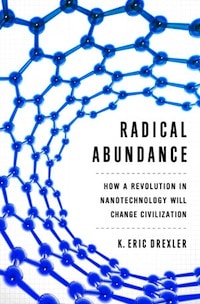The US White House Office of Science and Technology Policy (OSTP) is seeking suggestions for Nanotechnology Grand Challenges. As explained in the Federal Register for June 17, 2015 “Nanotechnology-Inspired Grand Challenges for the Next Decade“:
A Notice by the Science and Technology Policy Office on 06/17/2015
The purpose of this Request for Information (RFI) is to seek suggestions for Nanotechnology-Inspired Grand Challenges for the Next Decade: Ambitious but achievable goals that harness nanoscience, nanotechnology, and innovation to solve important national or global problems and have the potential to capture the public’s imagination. This RFI is intended to gather information from external stakeholders about potential grand challenges that will help guide the science and technology priorities of Federal agencies, catalyze new research activities, foster the commercialization of nanotechnologies, and inspire different sectors to invest in achieving the goals. Input is sought from nanotechnology stakeholders including researchers in academia and industry, non-governmental organizations, scientific and professional societies, and all other interested members of the public. …
Responses must be received by July 16, 2015 to be considered. …
The announcement continues with background information, instructions on how to submit a response, just what information is requested, questions to be addressed in proposals, and lastly examples of potential nanotechnology-inspired grand challenges for the next decade. All of the six examples given are worthy, but we find #4 the most interesting:
4. Manufacture atomically-precise materials with fifty times the strength of aluminum at half the weight and the same cost. The development of new materials enabled by nanotechnology is hindered by the fact that their properties often fall far short of what would be predicted based upon the properties of nanoscale building blocks. Atomically precise manufacturing will enable ultra-lightweight, durable, high strength materials that could drastically increase the energy efficiency of cars and other transportation systems, and lead to dramatic improvements in a broad range of other applications, ranging from catalysts that convert sunlight to fuel, to electronics that consume much less energy.
A post on the Whitehouse blog coauthored by the Assistant Director for Nanotechnology at the White House Office of Science and Technology Policy (OSTP) and the Deputy Director for Technology and Innovation at OSTP explains the origin of this Request for Information in the most recent review of the National Nanotechnology Initiative
… In a recent review of the NNI, the President’s Council of Advisors on Science and Technology called for government agencies, industry, and the research community to identify and pursue nanotechnology Grand Challenges. Through today’s RFI, we want to hear your game-changing ideas for Grand Challenges that harness nanoscience and nanotechnology to solve important national or global problems. These Grand Challenges should stimulate additional public and private investment, and foster the commercialization of Federally-funded nanotechnology research. …
The National Nanotechnology Coordination Office (NNCO) added:
… As explained by Dr. Michael Meador, Director of the NNCO, the RFI is a key step in responding to the most recent assessment of the National Nanotechnology Initiative (NNI) by the President’s Council of Advisors on Science and Technology (PCAST). “PCAST specifically recommended that the Federal government launch nanotechnology grand challenges in order to focus and amplify the impact of Federal nanotechnology investments and activities.”
… The RFI seeks input from nanotechnology stakeholders including researchers in academia and industry, non-governmental organizations, scientific and professional societies, and all other interested members of the public. “We strongly encourage everyone to spread the word about this request,” adds Meador. “We are excited about this request and hope to receive suggestions for bold and exciting challenges that nanotechnology can solve.”
July 16, 2015, is not far away, so there is not a lot of time to get a proposal together. However, the Request For Information notes (scroll down to “Information Requested”):
… In addition to seeking suggestions from the community for other grand challenges, comments are sought as to the merits of these [six] examples, including how they could be improved, along with additional information supporting these examples as detailed in the questions that follow. …

We at Foresight are very gratified to see the inclusion of atomically precise manufacturing as #4 among the six examples of grand challenges. Although personally, I think the emphasis on “atomically-precise materials” greatly understates the potential of atomically precise manufacturing. As nanotechnology advances incrementally it will become increasingly possible to make atomically-precise materials without a general purpose, inexpensive, high-throughput atomically precise manufacturing technology. For example, we recently cited a report that arrays of pure semiconducting carbon nanotubes can be prepared for nanoelectronics. This is a significant step towards the ability to manufacture atomically-precise materials, but is not a step toward a general purpose atomically precise manufacturing technology. The ability to manufacture atomically-precise materials could be implemented by a complex strategy different for each atomically-precise material, or through a general purpose nanofactory. These arguments are not new. Foresight and IMM presented them to OSTP in a White Paper requested after a series of meetings with the OSTP in early 2002.
Atomically precise manufacturing as it was presented in the 2007 Foresight Nanotech Institute and Battelle Productive Nanosystems Technology Roadmap and in the 2005 short animated film “Productive Nanosystems: from Molecules to Superproducts” (an 86 MB download) is about atomically precise systems of complex molecular machines able to fabricate a wide array of atomically precise products. For the most recent take on inexpensive, high-throughput atomically precise manufacturing, see “APM in brief”, the middle column of Eric Drexler’s blog, or the longer version here. If you agree, you might consider letting the good people at OSTP know. Nevertheless, they have certainly provided a wealth of good ideas to consider. The question is which will deliver the most inspiration per dollar invested?
—James Lewis, PhD